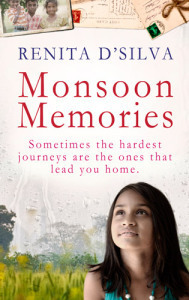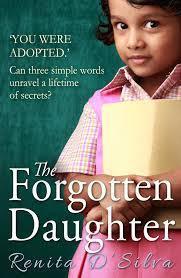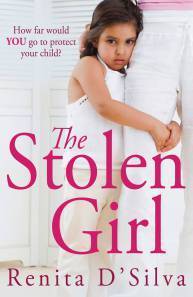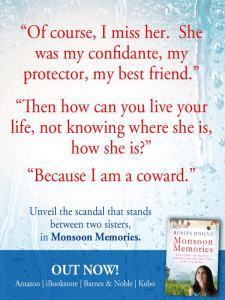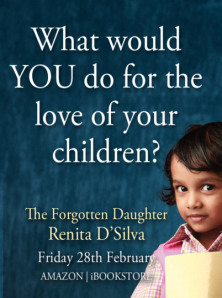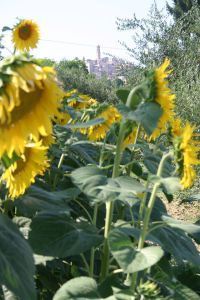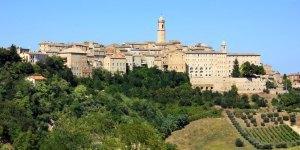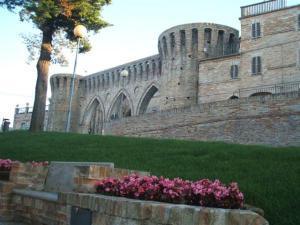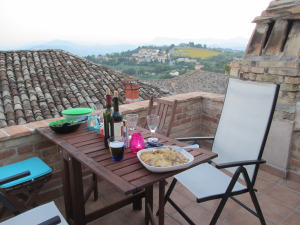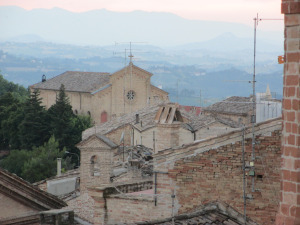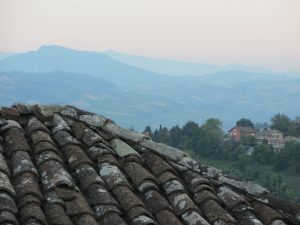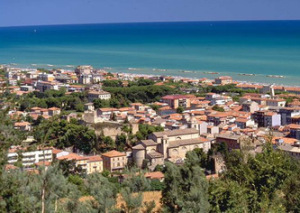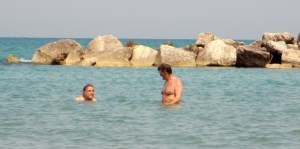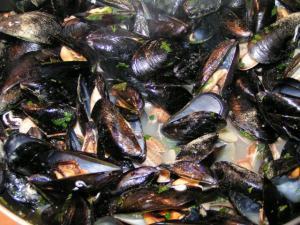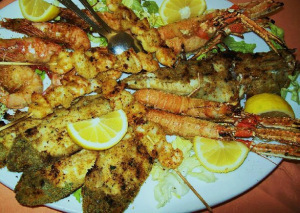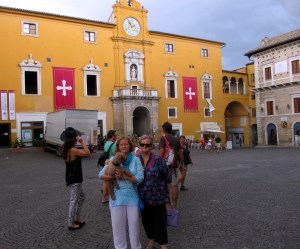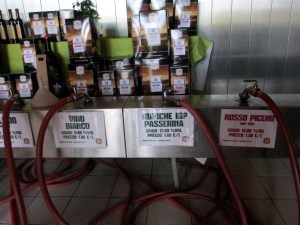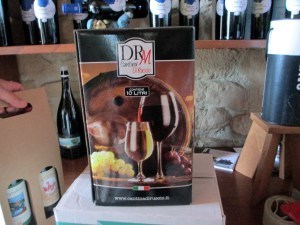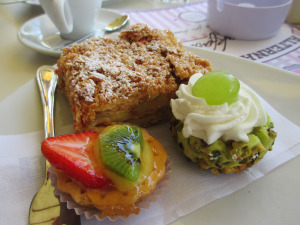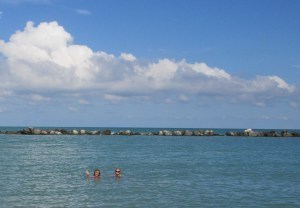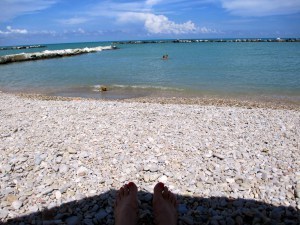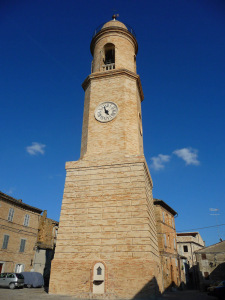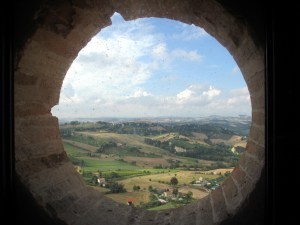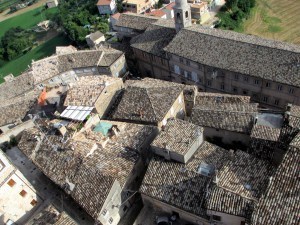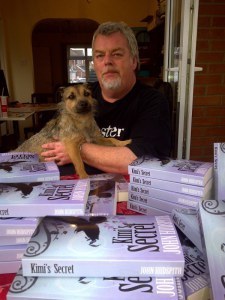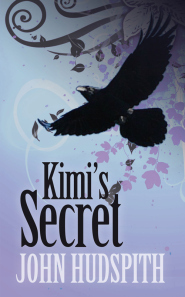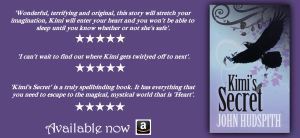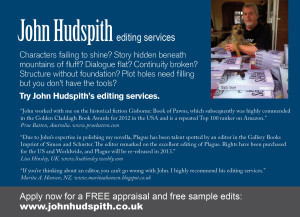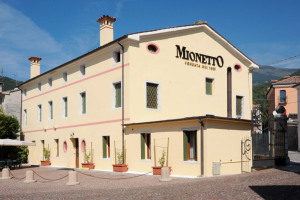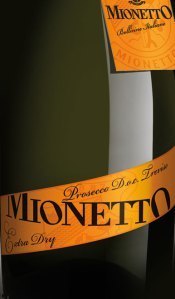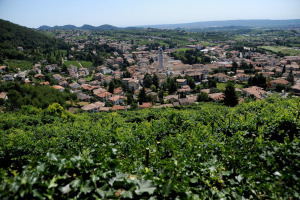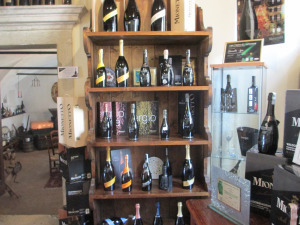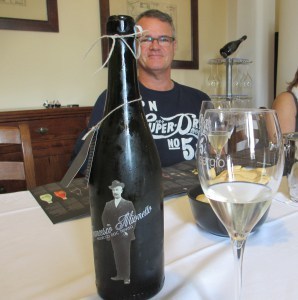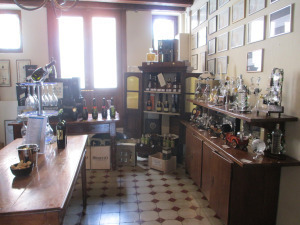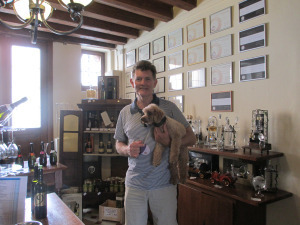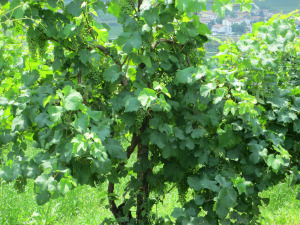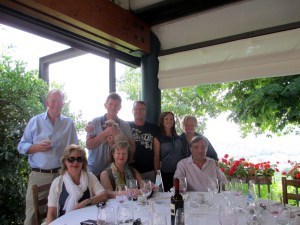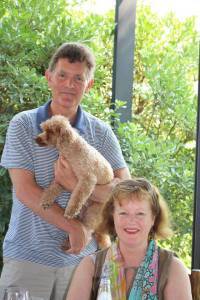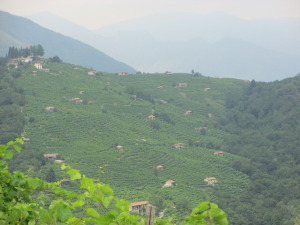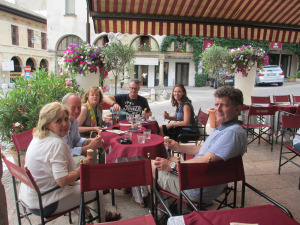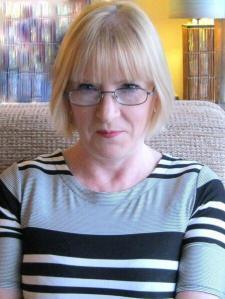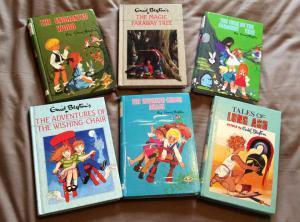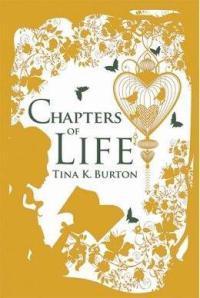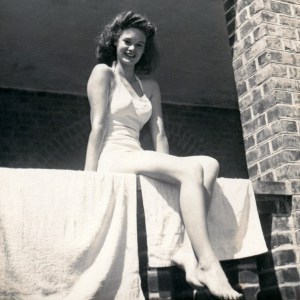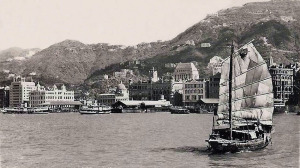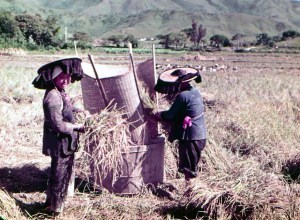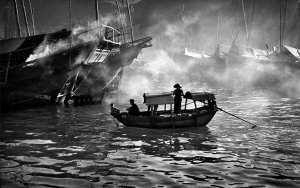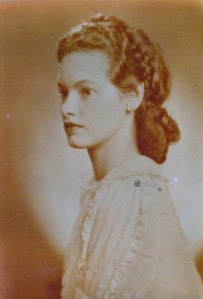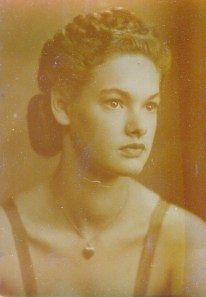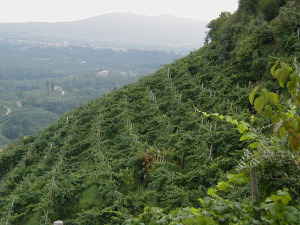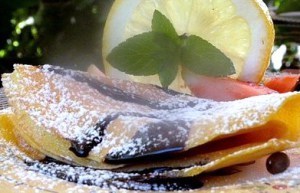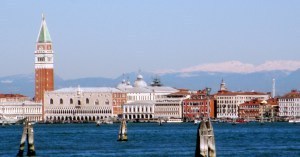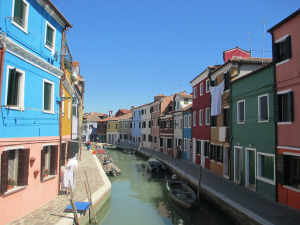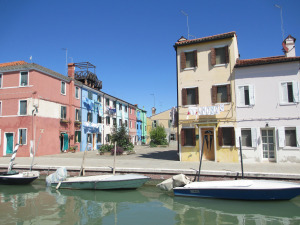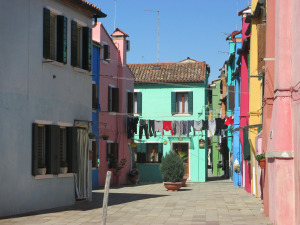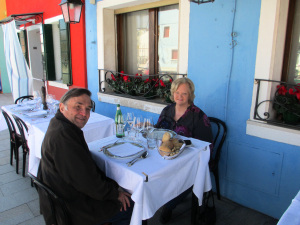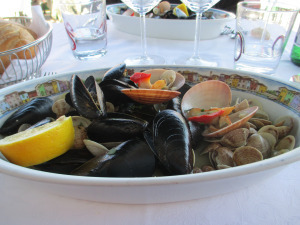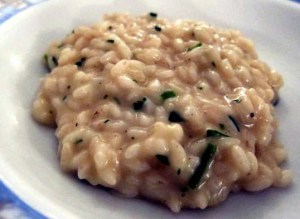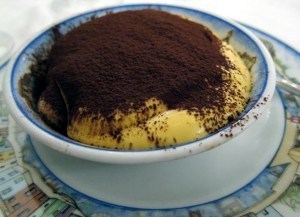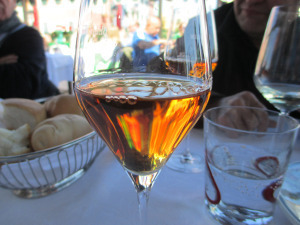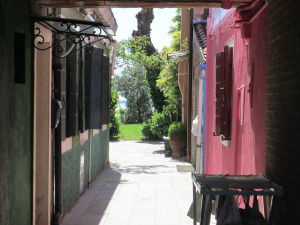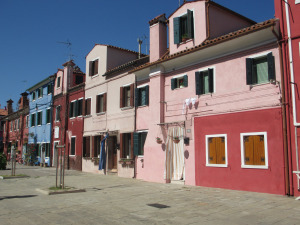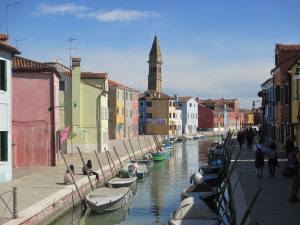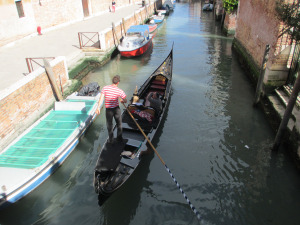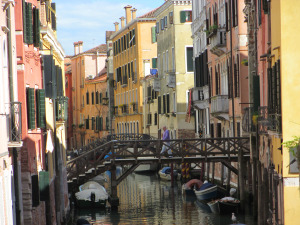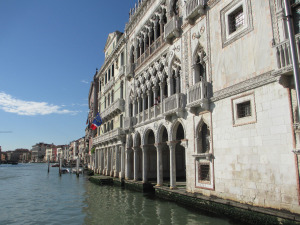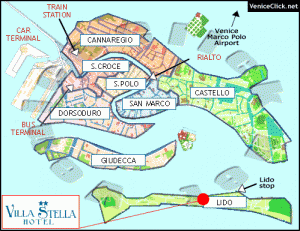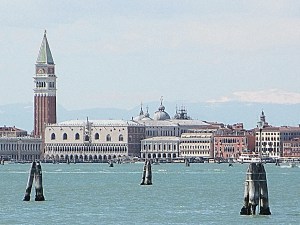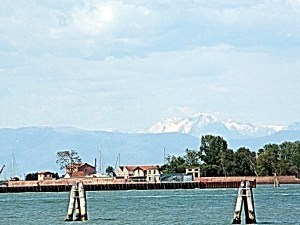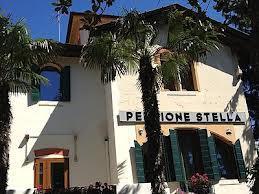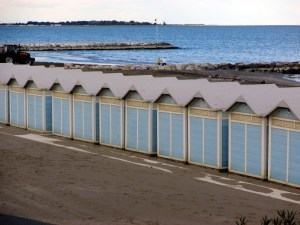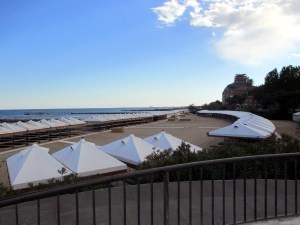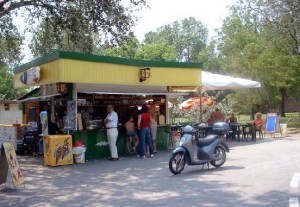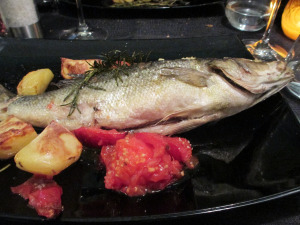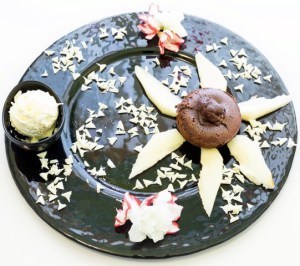Siobhan Daiko's Blog, page 16
August 4, 2014
Monday Interview with Renita D’Silva
My guest for a pre lunch aperitivo and chat today is the lovely and wonderfully talented Renita D’Silva.
She loves stories, both reading and creating them. Her shorts have been published in The View from Here, Bartleby Snopes, This Zine, Platinum Page, Paragraph Planet, and have even been nominated for the Pushcart Prize and the Best of the Net Anthology.
Renita’s novels, Monsoon Memories
are available in paperback and e-book, and have received myriad rave reviews on Amazon and Goodreads. Her third novel, The Stolen Girl, will be published on 12th September 2014 (my late grandmother’s birthday).
Welcome to Italy, Renita, and what can I offer you? A glass of Prosecco? A spritzer? A Bellini? Or perhaps some Pinot Grigio or Bardolino?
Thank you so much for hosting me. I’ll have a glass of Prosecco, please.
Ooh, I’ll join you (pours two glasses). Cheers!
Make yourself comfortable, darlin’! We’ve known each other for a while now since we met on Twitter. I’m honoured you’ve agreed to this interview and would like to start by asking, ‘What inspired you to become a writer?’
I have always wanted to write. Writing completes me. But it was only ever a hobby until my children came along and I gave up work to become a full-time mum. When my youngest started nursery, I had a few hours to myself and decided to indulge my creative calling by enrolling in an Adult Education Creative Writing course. That was the first time I dared to share the stories that had populated my head for so long with others – and they loved them! That gave me the courage to send a few of my stories off to magazines and submit to competitions. They were accepted and it went from there …
You’re such an amazing writer, Renita, with a beautiful voice. This is the review I wrote on Amazon for Monsoon Memories, and I meant every word:
I loved this book, quickly becoming engrossed in the story. Like the delightful eleven year-old protagonist, I wanted to solve the mystery at the heart of the narrative. Renita D’Silva cleverly drops clues, but doesn’t give away too much too soon, teasing the reader right up to the end. Beautifully written, Renita’s Monsoon Memories takes you straight to India through the wonderful descriptions, evoking the sights, sounds, smells and tastes of this fascinating country and giving you an insight into the culture of Catholic Indians. But it was the characters that engaged me most. I became deeply attached to them, and I’m looking forward to Renita’s next novel.
Can you tell us something about your second book, The Forgotten Daughter?
The Forgotten Daughter is the story of three disparate women: Nisha – a statistical consultant who sets great store by facts – who finds out that she was adopted, that her whole, carefully ordered life has been built upon a lie; Devi, a spirited young woman who rebels against the constraints of her mother’s stifling love and the restrictions of a culture that suffocates her; Shilpa, a poor woman living in a village in India who does what she thinks best in exceptional circumstances but in retrospect regrets her choices. All three protagonists are embarking on journeys: Nisha in a literal sense, to find her roots and in the process, to unearth the person she really is; Devi on a journey of reconciliation with her estranged mother; Shilpa, on a journey towards acceptance of the choices she made in her life – often with devastating consequences.
I’m reading it now and I’m absolutely loving it. How does The Stolen Girl differ from your first two novels?
The Stolen Girl is set equally in India and in the UK, unlike my other books which are set mostly in India. I had to do a lot of research for this book, much more so than with the other two. Also, The Stolen Girl is structurally different from my other books in that, although the other two flit between the past and present, The Stolen Girl is divided into parts which distinctly demarcate the past from the present. It explores two very different women and the decisions they make, which unleash a tsunami that rocks their world, the deluge of resulting waves drowning their futures.
Wow! Sounds fantastic and right up my street, as they say. In your writing you seem to gravitate towards family dramas, the secrets we keep from those closest to us and how they affect everyone involved. Have you thought about trying any different genres?
Not really, no. I am intrigued by people, by identity, roots, what makes us who we are. I like the thought that an ordinary person whose life is headed along a regular path can make an about turn based on one choice. One bad turn. I also like how the choices a person makes can echo, reverberate into the future, like an earthquake causing aftershocks both big and small. I like how as humans we are all flawed. We try to do our best but sometimes, our best is not good enough. Sometimes, our best turns out to be the worst thing we could have done. I like delving into what makes us tick. I suppose I will continue to explore that in my books.
Which is why they’re so successful. I’d love to hear about your writing process, and I’m sure my readers would too. Can you give us some information about how you develop your plots and characters? Also, what has been your greatest writing challenge so far, and how have you overcome it?
My stories start as pictures in my head.The pictures take root and over time, they are embellished with detail. I strive to depict in words these images that crowd my head and nag at me to tell their story. And if, whilst reading back what I have written, I can see the picture in my head bloom on the page via the words I have written, then I am happy.
All my books involve multiple narrators and alternating narratives. I like the way different stories converge to one point at the end of the book. So I do a very broad sketch but I don’t like to plan in too much detail. I like my characters to take me by surprise as I am writing the story; I like them to grow a backbone, to stand up to me and say, ‘I wouldn’t do that, this is what I would do.’ It gives me such a thrill when the characters have developed so much that they have their own voice and they tell me what to do rather than the other way round. After that the book takes off, it is out of my hands and in theirs.
I think my greatest challenge so far has been writing and completing The Forgotten Daughter, my second book. Even though I had hoped my debut, Monsoon Memories, would see the light of day, when it actually was published and liked by readers, I panicked. I did not know if I could write another book – though of course I wanted to. I worried that it wouldn’t be good, that the first one was a lucky fluke. Also penning the first draft of The Forgotten Daughter was my first time writing to a time frame. I worried whether I would make the deadline. And I tried to incorporate all the bits of feedback from readers regarding Monsoon Memories into the first draft of my second book. On the advice of my publisher and editor, who didn’t give up on me after that disastrous first attempt, I took a step back. Thought hard about what I really wanted to write about. The second draft was better, although not by much. It took three drafts to mine the story I wanted to tell, the way I wanted to tell it.
Thanks for being so honest with us, darlin’. Please tell us about your road to publication! Is there anything you did that you’d do differently with hindsight and, what advice can you give those of us aspiring to be published?
The process of publication was a huge learning curve. I come from an IT background and did not know any publishers, agents or authors. So, when I penned “The End” on my first draft, I googled what to do next. The one suggestion that stood out, that was reiterated many times, advised new authors to get a copy of The Writers and Artists Yearbook and send off their manuscript to agents who represented books like theirs. And that is what I did. But I was impatient and sent the manuscript off before it was the best it could be. I got some very positive feedback with a few agents requesting the full manuscript but they all came back with, ‘Get back to us when you have worked on it.’ So I worked on it and sent it off again and this time they said it was good but that they were not taking on new authors due to the recession. I had all but given up when I saw an ad for Bookouture in Mslexia, the magazine for women writers. And so I sent my manuscript off to Bookouture. And they said yes!
My advice to aspiring authors would be:
Do not send your manuscript out before it is the best it can be.
Try not to let rejection get you down. Everybody gets rejected., J.K. Rowling got rejected umpteen times before Harry Potter was unleashed on the world.
Believe in yourself and keep trying. The published author is someone who has picked himself up after each rejection and persevered. With the advent of the e-book and Indie publishing, there has never been a better time to be an author. It only takes one publisher to say yes and they are waiting just around the corner. Believe in yourself and do not give up!
You’re an inspiration, Renita. You say you love stories. What books do you enjoy reading most?
I read widely and variedly, across genres. I like books that take me by surprise, that hold me in their thrall from the first page until the last. Favourite authors: Margaret Atwood, Hilary Mantel, Arundhati Roy, Chimamanda Ngosi Adichie, Markus Zusak … The list is endless, fluid, constantly growing and changing.
I know what you mean. Same with me and I’m sure with many readers. On a personal note, what do you get up to when you’re not reading or writing?
I work at my daughter’s school and tutor at home in the evenings and on Saturdays. Any spare time I get, I spend with my family.
Juggling work, writing, and family life must be difficult and I’m full of admiration for you. What are your plans, hopes, dreams and aspirations for the next stage in your writing career?
I would love to continue to write and entertain readers.
I wish you every success, Renita. It’s been an absolute joy chatting with you. Thanks for dropping by. Before you go, please can you leave readers with three facts that might surprise them about you?
I hate wearing jewellery. I do not mind spiders but am terrified of lizards. I love winter best, the colder the better…
Thank you so very much for hosting me today, Siobhan. It has been such a pleasure.
The pleasure is all mine. Readers, if you’d like to know more about Renita, you can find her on Facebook, or you can visit her website. And she’s on on Twitter @RenitaDSilva


July 27, 2014
Perfect Petritoli
It’s a long drive down from the Veneto, made worse by the fact that we encounter two major hold-ups, and we’re hot, tired, and thirsty by the time we get to Petritoli. But the sunflower fields and beauty of this small town in Le Marche lift our spirits as we leave the motorway behind.
Sis and brother-in-law have restored a small town house here. We haven’t visited since the restoration; for the past few summers we’ve been busy looking after Mum. We’re totally bowled over by the gorgeousness of it when we arrive for an adventure at Casa Clodagh. A little gem, but they’ve put it on the market for they’ve found somewhere else they’d like in exchange. As the sun pinks the sky, we settle down for a lovely evening on the roof terrace, with delicious food and drink. Wonderful!
Having grown up in Hong Kong we love swimming in the sea, and off we set for Pedaso beach the next day armed with umbrella and sunscreen (my skin and the sun don’t mix).
A delicious fish dinner in the evening at Villa Montotto makes a perfect ending to a perfect day.
The following morning we decide to visit the beautiful old Roman town of Fermo nearby. We stroll around, have lunch, then a yummy gelato in the main square.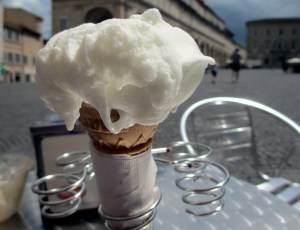
Sis and me with Jackadoodle Cara.
Home for a siesta, then out again to stock up on wine to take back to the Veneto. Brother-in-law knows a place where you can buy it from a pump at 1.30 Euros a litre. We didn’t have any bottles so opt for 10 litre boxes at 15 Euros instead. That should keep us going for a while…
Our final day. After a snack lunch at Casa Clodagh, we stop off for coffee and cake in a seaside caffè
then go to the beach again to swim off the extra calories.
Oh, and a relaxing read under the umbrella.
Back in Petritoli, hubby and sis climb the tower. What a view!
Another delicious dinner, this time at the Albergo Roma. Incredibly good value and amazing food.
Ah, so sad to be leaving, but we’re off on another adventure to visit friends who live half an hour away in fascinating Force. Can’t wait!


July 21, 2014
Monday interview with John Hudspith
My guest this week for a pre-lunch aperitivo and chat is the talented author and editor, John Hudspith.
In the northernmost spire of his black-brick château, Johnny edits novels by day and scrawls scary stories by night. His novels – Kimi’s Secret
and – Kimi’s Fear
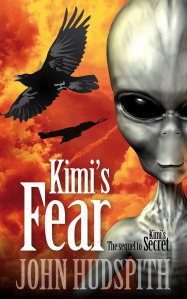 are available in paperback and e-book, and have received a wealth of rave reviews on Amazon. He’s a brilliant editor as well, and you can read the testimonials to his work here.
are available in paperback and e-book, and have received a wealth of rave reviews on Amazon. He’s a brilliant editor as well, and you can read the testimonials to his work here.
Welcome, Johnny, to my artist’s studio in Italy. What can I offer you? A glass of Prosecco? A spritzer? A Bellini? Or perhaps a Peroni?
Prosecco and a Peroni, please. I’m in a fizzy mood.
Ooh, I’ll join you in a Prosecco, and might have a second glass when you move onto your Peroni. Just a sec while I open the bottle.
 Okay, make yourself comfortable. We’ve known each other for about six months now since we started working together, and I’d like to introduce you to the readers of my blog. You’re a lovely man with a wicked sense of humour. Thanks for agreeing to the interview. I’ll start by asking what made you decide to become a writer?
Okay, make yourself comfortable. We’ve known each other for about six months now since we started working together, and I’d like to introduce you to the readers of my blog. You’re a lovely man with a wicked sense of humour. Thanks for agreeing to the interview. I’ll start by asking what made you decide to become a writer?
Compliments and alcohol – I like it here. Cheers! Does one decide to become a writer? I guess like most writers I doodled from an early age, but encouragement from family impressed (or scared witless) by my tales of terror, pushed me on to making something of it.
You certainly have a wonderful way with words. Which authors inspired you when you were younger?
Enid Blyton’s wicked imagination is my earliest memory. Mr Pink-Whistle’s crazy adventures a particular favourite. Though I soon found my brother’s hidden ‘adult’ books and discovered they were even more fun. ;-)
I too loved Enid Blyton. I can remember The Magic Faraway Tree was the first book I read on my own. What books do you enjoy reading today?
I like reading books that are crafted well, books that can take me to another place without me noticing I’m going anywhere, stories infused with the essence of place and unique voice. Sadly, such reads are hard to find.
Hmm. Tell us about the inspiration behind your first novel, Kimi’s Secret!
Kimi’s Secret was a personal mission. I wanted to take all those influences from my youth: aliens, UFO, time-travel, Hammer Horror films, Alfred Hitchcock, the works of Conan Doyle – as well as my love for birds – crows especially, and to create an original fantasy world as well as an entertaining story, using those influencers to best effect. Oh, and I also wanted the story to be loved by the young reader as well as the old.
I’m in the middle of reading Kimi’s Secret now. Awesome! Kimi is an engaging character, and I can’t wait to find out what happens to her. You’ve also written a second novel, Kimi’s Fear. How does is differ from Kimi’s Secret?
Although Kimi’s Fear is a follow-on (what happens next), it’s markedly different from the first book where structure is concerned. The first book had a full-circle twist to it that required quite a bit of weaving, as well as introducing the reader to the workings of the fantasy world. That took some doing, and it ended up a hefty tome. Kimi’s Fear is a lot shorter simply by the nature of the story.
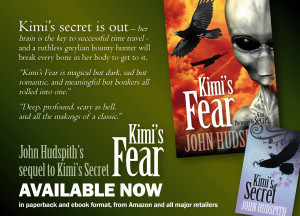 Ooh, I’m looking forward to reading it. Which genre would you say you write in, and have you thought about trying any other genres? Can you give us some information about what you’re working on now?
Ooh, I’m looking forward to reading it. Which genre would you say you write in, and have you thought about trying any other genres? Can you give us some information about what you’re working on now?
There’s no genre for my doodling – I guess it’s a mishmash.Though maybe it errs on the side of horror. Right now I’m attempting literary – an allegorical tale based on the horrors of humanity and false love and devotion. I’ve set myself another mission: eight POV characters, and dual stories (real-time and allegorical) running at the same time. Can I keep it entertaining but true? Can I use so many POVs (as well as tense and voice changes) and not lose reader? We shall see…
Well, I’ve read the start of your WIP. Although I found the prologue slightly disturbing, not being a regular reader of horror, I was intrigued by it. Once I’d read on, I was hooked by the characters. It’s an interesting premise, and I’d love to read the rest of the novel. Oh, I can see your glass is empty. Here, let me pour you a Peroni and top up my Prosecco.
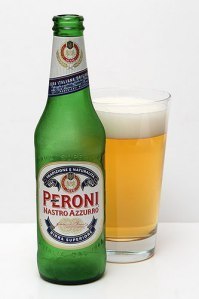 Now tell me, Johnny, what’s been your greatest writing challenge and how have you overcome it?
Now tell me, Johnny, what’s been your greatest writing challenge and how have you overcome it?
Cheers! Kimi’s Secret and the structure within was a challenge – making the story and the otherworld work work at the same time as making the read suitable for all ages. Kimi now has fans from age 9 to 90 – so I’m pleased with the result.
As for how did I overcome it? Multiple storyboards, notepads, draft after draft after false start after false start after pulling all my hair out – and five years to do it in.
Same thing happened to me with The Orchid Tree, which I messed about with for ages until you came along and edited it so brilliantly. Tell us how you became an editor!
When I started learning the craft I became hooked on peer review. I could see the shortcomings in the work and had to learn how to articulate those shortcomings in writing. One happy recipient asked if I would apply my analysis to the whole novel and became my first client. Word of mouth quickly brought more work, and a year later I was freelancing full-time.
You have a knack for pinpointing what works and what doesn’t in a client’s manuscript. You’ve edited nearly 100 novels, over 100 shorts and several novellas, I believe. What do you think is the secret to your editing success?
The secret to success is a happy client. I go the extra mile.
You certainly do. When you suggested some rewrites of a few chapters of The Orchid Tree, I was bowled over by the attention you gave me to help improve my story. If you could give my readers one important tip when self-editing, what would it be?
Read your work out loud, with the passion and skill of a great orator, as if you were reading to your intended audience. Doing so will unearth the blips and jars.
Can you give an example of what you mean by blips and jars?
Contractions (or the lack of) are a constant offender. People speak in contractions. So should your narrative voice.
That’s an excellent tip. On a personal note, I know you have two delightful dogs. Would you tell us about them and let us have a couple of pictures?
Ollie is a Border Terrier/Jack Russell cross, he’s around six years old, a rescue dog, lovely temperament.
And Barney is a recent addition – he ran out in front of the car one day; a wet mass of stinking muck. We believe he’s a Whippet/Terrier cross – another lovely temperament. To quote our vet: ‘His legs are too short and he’s got a neck like a giraffe, but he’s a handsome boy.’
 Two gorgeous dogs who truly think they’re little humans.
Two gorgeous dogs who truly think they’re little humans.
 Aw, they’re absolutely adorable.
Aw, they’re absolutely adorable.
It’s been great chatting with you, Johnny. Thanks for dropping by. Before you go, please can you leave readers with three facts that might surprise them about you?
I could tell you about the thing in the cellar, or the time with the FBI, or the banana fetish, but I might get arrested…
Ha ha ha! Readers, I told you Johnny has a wicked sense of humour. But, on a more serious note, if you’d like to know more about John Hudspith, click on this link to his website http://www.johnhudspith.co.uk/ And there are some useful tips on editing and the craft of writing on Johnny’s blog.


July 17, 2014
An adventure with family, friends, and Jackadoodle Cara.
Hot sunshine bakes the dry river bed, as we cross the Piave and drive to Valdobbiadene, sat navs at the ready to find our location. A friend from California, who’s in the wine business, is staying with his wife and has arranged for us to visit the home of Mionetto Prosecco.
I’ve blogged about this delicious wine before, and I can’t wait to try the different varieties. Perfect for a day like today, when perspiration prickles my hairline and armpits. Sergio Mionetto was a friend of Mum’s. A real character, he was the centre of attention at many of her parties. (She was a great party-giver). He sold the family business some years ago, with the proviso that the new owners could retain his name, and use the slogan, This is not just a Prosecco, it’s Mionetto.
We pile out of the two cars (there’re eight of us and Cara). In the tasting room, we learn about the history of Mionetto and find out why the grapes grown on the hills around Valdobbiadene are ideal for prosecco making. It’s the thin soil, which gives way to stone, and provides the fruit with a mineral taste.
Francesca, the lovely manager, opens bottle after bottle for us. There’re silver pots in the middle of the table, and I realise what they’re for. But how can I spit out wine after I’ve tasted it? The first two glasses go down a treat, then the sensible voice in my head tells me to take one sip only from the next three glasses and pour the rest into the pot. What a waste!
Brother peruses the catalogue and makes his choices.
There’s a museum showcasing old vinification implements, and a collection of all the iconic wine Mionetto has produced.
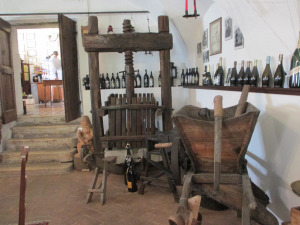 Brother-in-law and Cara aren’t impressed, however. Neither of them are prosecco fans.
Brother-in-law and Cara aren’t impressed, however. Neither of them are prosecco fans.
Laden down with purchases, we set off for lunch at the Trattoria alla Cima, which is surrounded by vineyards on the hill above the town.
The restaurant produces its own prosecco, and the food is absolutely delicious. Check it out here! A close-up of Cara with my sister and brother-in-law.
A thunderstorm is brewing, and rain starts to sheet across prosecco country.
We head home via the Caffè Centrale in Asolo for some gelato. A day for the memory bank, I think.


July 14, 2014
Monday Interview with Tina K Burton
I’m starting a new venture in my blog, where I’ll invite a fellow writer for an aperitivo and a chat. My first guest is the lovely and talented Tina K Burton. She’s a short story, article, and novel writer, and a quilling artist, which is the technique of making designs and pictures from rolled up strips of paper.
Tina’s first novel, Chapters of Life, is available in paperback and e-book, and has received a wealth of rave reviews on Amazon. When she’s not writing or quilling, Tina likes reading, running, cooking, and going for walks across the beautiful moorland where she lives in Devon, UK.
Welcome, Tina, and what can I offer you? A glass of prosecco? A spritzer? A bellini? Or perhaps some Pinot Grigio or Valpolicalla (as we’re in Italy)?
Ooh, I’d love a spritzer, please :-)
I’ll have one too. Nice and refreshing on a warm summer’s day.
Okay, make yourself comfortable, Tina. We’ve known each other just over a year now since we met on Twitter. Thanks for agreeing to the interview. I’d like to start by asking, ‘What made you decide to become a writer?’
Well, I’ve always had a good imagination – I was constantly berated at school for staring out of the window rather than concentrating on my lessons – but the stories I made up in my head were infinitely more interesting than real life. Then, when I had my daughter, I made up stories for her. Once she was older and I went back to work, I had lots of ideas for articles and short stories, and started writing more seriously.
So you started making up stories when you were a child. Which authors inspired you at that time?
This is going to sound so twee, but my favourite author then was Enid Blyton. I couldn’t get enough of her books, and read almost every one. I still have some of my originals.
We studied various authors at school and, apart from the obvious, one of my other favourites was Thomas Hardy.
I, too, loved Enid Blyton and Thomas Hardy when I was younger. What books do you enjoy reading today?
I read a variety of genres. I can’t be doing with books that are too descriptive, though. I don’t care what the surroundings are like. I want to get on with the story. I read books by Erica James, Debbie Macomber, Simon Kernick – a brilliant London-based author, his books are edge of your seat stuff – John Connolly, Daphne Du Maurier, M C Beaton. I’ll read anything that looks interesting.
You’re like me then. We both have eclectic tastes. What was the inspiration behind your debut novel, Chapters of Life?
We lived in Sussex. I was in our local bookshop, wishing they had a cafe so I could sit with a cup of tea and a book. Suddenly this whole bookshop appeared in my mind, and the characters started to evolve around it. In a matter of days, I had the whole story in my head and just had to write it down.
Sounds wonderful. I’ve downloaded it onto my Kindle and will read it as soon as possible. You’ve just completed a second novel, The Love Shack. Please tell us about it!
Ah, it’s a humorous contemporary romance, set around a dating agency. The main character is Daisy Dorson, a rather sweet, but naive girl who’s only aim in life is to be happy and find a man she adores. We meet a selection of quirky characters who sign on looking for love, and there’s plenty of emotion and drama.
Sounds just my cuppa. What genre of romance would you say you write in, and have you thought about trying any other genres, either of romance or something else?
For my novels, I mainly write women’s fiction, but my short stories are a variety of genres, from tales with a twist to horror, crime, romance, flash fiction and adult fairy-tales. I’m always open to trying different genres, both in reading and in writing. I think it’s good to stretch yourself and try new things – it helps us become better writers.
Indeed, Tina. I know you are signed by a publisher for Chapters of Life, but would you ever consider self-publishing?
Yes, I would. There are pros and cons to both in my opinion. Whilst I feel there’s some kudos to having a publisher, I like the idea of being in control of my own book – and getting the majority of the profit. But, you have to know what you’re doing, or pay someone else who knows what to do.
Being in control and getting the majority of the profit is certainly a plus, I agree. What has been your greatest writing challenge and how have you overcome it, if you have?
I’m not a disciplined writer and I still haven’t overcome this problem. How I envy those writers who can sit at their desk at 9 am and work until 5 pm every day. I have to be in the right frame of mind to write, so I make the most of it when I am as I know it may be short lived. When I’m “in the zone”, I’ll start writing at 8 am, and still be there at 6 pm, having skipped lunch. I need to get the words down whilst they are flowing. I’ll work like this for a week or two, but then I can go for a month without writing another word. It’s very frustrating.
Well, we all have different ways of “getting the words down”. You’ve got two novels under your belt, and have had several short stories published, so obviously your method works for you. What are your plans, hopes, dreams and aspirations for the next state in your writing career?
I’d love to see my novels in bookshops, that would be wonderful, and after that, I’d really like to write for television. Gritty serial dramas, that sort of thing. But that’s a whole new ball game!
I wish you every success, Tina. It’s been great chatting with you. Thanks for dropping by! Before you go, please can you leave readers with three facts that may surprise them about you?
Hmm, okay. I smacked a camel on the nose because it spat on me. I married my next door neighbour, and, once, I spent my lunchtime watching a cremation.
Ha, ha, ha! I’m dying to know more. Good thing I’m following your blog. Readers, if you’d like to know more about Tina, you can find her on Facebook, where she also has her own quilling page – Quillina – Twitter, and Pinterest. Details are on her website here.


June 23, 2014
Meet My Main Character Blog Tour
I love writing this blog, especially when visitors leave comments. A regular commentator is Teagan Geneviene and I really enjoy visiting her blog. When I read her post Meet My Main Character Blog Tour, and saw that she hadn’t found anyone to tag, I tagged myself. If you’ve visited her blog, you’ll know what fun it is – please drop by and read about the main character in her WIP, the sequel to Atonement, Tennessee. Teagan says, “You’ll meet many familiar characters in book 2, Atonement in Bloom. Once again, Ralda Lawton is the main character and primary narrator. Lilith the calico is back too, and the parts of the story Ralda can’t see are told through the cat’s eyes. The story is an urban fantasy, inspired by ancient Celtic mythology.” 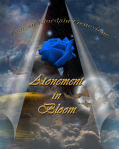
Now it’s my turn in the “Meet My Main Character Blog Tour.”
For this virtual tour, we have to answer a series of questions about the main character in a work-in-progress (WIP). Here are my answers to the questions about the principal heroine of The Orchid Tree.
1. What is the name of your character? Is she fictional?
Kate Wolseley is a fictional character, although I’ve given her the physical characteristics of my mother at her age.
2. When and where is the story set?
Colonial Hong Kong between 1941-1945 and from 1948-1949. My grandparents were interned by the Japanese during WWII, and I’ve used their memoirs of life behind barbed wire in the Stanley Civilian Internment Camp. My father joined the Chinese Maritime Customs after his demob from the Royal Navy, and his experiences chasing smugglers up and down the South China Coast inspired the character of the Englishman, James, in my novel. I wanted to bring alive a time and place that no longer exist, and I hope my knowledge of the era lends an authenticity to my writing that readers will enjoy. You can see some of the locations of The Orchid Tree here.
4. What should we know about Kate?
I don’t want to give away the story, so I’ll keep this brief. Kate has lived a pampered existence, in a house full of servants, at the pinnacle of pre-war Hong Kong society. Spoiled by her father, but lacking the attention of her mother, she finds comfort in the love of her Chinese amah (nanny). Her background is typical “stiff upper lip” British, except Kate is more open than her parents. As a result of her over-protected upbringing, she’s young for her age, which is fifteen at the start of the novel.
4. What is the main conflict?
Initially, WWII. Kate is interned with her parents in a squalid camp and has to endure cramped conditions, humiliation, disease, and starvation. She befriends 17 year-old Charles – who’s half Chinese – and they give their hearts to each other under the orchid tree. Kate’s father doesn’t approve of their relationship. At the end of the war, Kate and Charles are separated. She believes him to be dead when the ship he’s on is sunk, and her emotions have been frozen ever since.
5. What is the personal goal of the character?
Kate’s goal is to make a new life for herself in a society on the brink of change. She wants to become independent, overcome prejudice, and become a part of the new Hong Kong. All the while, Kate clings to her memories of Charles. Will she ever be able to love again?
6. Is there a working title for this novel, and can we read more about it?
After several working titles, I’ve finally settled on The Orchid Tree, the Bauhinia Blakeana, and I would like one of these trees on my book cover. A recurrent location in the novel, the orchid tree flower has become the emblem of Hong Kong. You can read the first eight chapters of my novel here.
7. When can we expect the book to be published?
I can’t make any promises or predictions at the stage. It’s in the lap of the gods, as they say. However, I would very much like to publish it before the calendar year is over. That’s my aim and I hope to achieve it.
And now, it’s my pleasure to pass the baton on to two wonderful authors. The first, Celia Micklefield, is a talented writer who I met through the YouWriteOn peer review site. The second, Tina Burton, is also an extremely gifted author, and I met her via Twitter. Please visit their websites and check them out! Both are highly creative. Tina loves quilling as well as writing, and Celia blogs about writing, reading and living in France. Thank you, dear friends, for agreeing to participate in the Meet My Main Character Blog Tour. I’m looking forward to reading about your main characters.
Celia Micklefield – Writer in Languedoc – Blogger, Trucklover, Trobairitz, Winelover. http://celiamicklefield.com/
Tina Burton’s Blog – A blog about writing and quilling – making designs and pictures from paper. http://tinakburtons.blogspot.co.uk/
Enjoy!
June 10, 2014
Prosecco Country
I’m re-blogging this post as I write “In My Lady’s Shadow” and describe my characters drinking a glass of Prosecco.
 Originally posted on Siobhan Daiko:
Originally posted on Siobhan Daiko:
Who doesn’t like a glass of Prosecco – that fresh, light. crisp and intensely aromatic Italian sparkling wine with the flavour of yellow apple, pear, white peach and apricot? I love it on its own, in a Bellini or Mimosa cocktail, or in a Sgroppino with vodka and lemon sorbet. The Glera Prosecco grapes are traditionally grown in the area north of Treviso, between Conegliano and Valdobbiadene, not far from where we live. The “strada del vino bianco” (the white wine road) winds through hills, their slopes covered in vineyards, and enchanting villages where we occasionally stop for a delicious lunch washed down with – you’ve guessed it – Prosecco.
There is much to explore and we sometimes visit Vittorio Veneto, the site of the last battle between Italy and the Austro-Hungarian Empire in 1918. This area was familiar to Ernest Hemmingway as it was here he set part of…
View original 51 more words


May 26, 2014
Writers’ Blog Tour
This post is a departure from my usual romance and adventure in Italy. I was delighted to be invited to take part in the Writers’ Blog Tour by the poet, short-story writer and blogger Steward Bartlam (http://stewartstanzas.wordpress.com/), who I met via Twitter. The Writers’ Blog Tour is a growing international community of writers working to introduce each others’ blogs to a wider audience. Each writer involved answers four questions about their work, and provides links to other writers who will follow on from them, in a continuous “chain”. Stewart had been invited onto the tour by the poet and blogger Marc Mordey (http://themarcistagenda.wordpress.com/). And Stewart, in turn, invited me, which is why it’s my turn to answer the four questions.
1. What am I working on?
I’m in the final stages of work on my debut novel, The Orchid Tree. It’s a coming of age story about two women. 15 year-old Kate lives a rarefied life of wealth and privilege in the Hong Kong expatriate community. When the Japanese take over the colony in December 1941, she’s interned in a squalid camp with her parents. Enduring cramped conditions, humiliation, disease, and starvation, she befriends 17 year-old Charles – who’s half Chinese – and they give their hearts to each other under the orchid tree. Forty miles away, in Macau, Sofia Rodrigues’ suspicions are aroused when her father invites a Japanese family to dinner, an event which leads to a breach between her and her controlling half-brother, Leo. At the end of the war, Kate and Charles are separated. She believes him to be dead when the ship he’s on is sunk. Sofia dreams of leaving Macau and starting a new life in Hong Kong, and she won’t let anyone, not even Leo, stop her. A young Englishman, James, arrives in the territory and becomes the link between Kate and Sofia. The communist-nationalist struggle in China spills over into the colony, catapulting the protagonists into the turmoil with disastrous consequences. A tale of loss and redemption, set against the background of conflict and changing values in colonial society, but also about never giving up on love.
While finalising The Orchid Tree, I’m also developing a time-slip historical romance, In My Lady’s Shadow, which unfolds in the renaissance Veneto town of Asolo, near where I live. Its’ about a young Englishwoman, Fern. On holiday in Italy, she’s haunted by visions of Cecilia – a woman who lived nearly five hundred years ago, while at the same time trying to recover from a terrible trauma. Will Luca, the man she meets, be able to help Fern escape the past?
2. How does my work differ from others of its genre?
My editor said of The Orchid Tree, ‘I found the narrative voice had a unique sparseness to it, a knack for succinct imagery and storytelling, and indeed the read brought a fragrant feel, almost as if one was sitting with the book beneath an orchid tree.’ These words have been hugely encouraging to me. I belong to the second generation of my family to have been born in Hong Kong, where I spent my childhood and early married life, and I hope my knowledge of the ex-colony lends an authenticity to my writing that readers will enjoy. My grandparents were interned by the Japanese from 1942-1945, and went through some of the experiences of my characters. My father’s life in the Chinese Maritime Customs inspired the start of part 2 of my novel. In my Italian novel, I’m aiming to create an ambiguity of imagery through scent and colour, like the artists who are the protagonists of the story.
3. Why to do write what I do?
The tale at the heart of The Orchid Tree has been in my mind for years, demanding to be told. I wrote it was because many of the novels I’ve read set in post-war Hong Kong didn’t ring true. I wanted to capture a time and place that no longer exist, but one which I knew so well, and it’s my hope that I’ve managed to take my readers there. Likewise, with respect to In My Lady’s Shadow, I’m privileged to live in another interesting part of the world and to have an insight into its culture.
4. How does my writing process work?
Difficult question. It was only after I’d joined the peer review site YouWriteOn and exchanged reviews with other writers that I learnt to write “properly”. One thing is certain, I’m happiest when I’m writing; it’s become as essential to me as breathing. When I was writing the first draft of my debut novel, I was definitely a “pantser writer”, writing by the seat of my pants, then polishing, cutting scenes, adding scenes, and fleshing out my characters. The writing buddies I made through YouWriteOn were a huge help. Finally, again through YWO, I found the right editor for me, John Hudspith, when a fellow member was singing his praises on the message board. Johnny not only edited The Orchid Tree in a highly professional way, but also gave feedback as a reader, which I think is vital. You can read my testimonial to him here. My writing process involves creating a rough outline before I start my first draft. I know how the story will end, as well as the major plot points, and I try to focus on my point of view character’s motivations and impediments to his/her goals. My aim is to keep the reader hooked by not revealing too much too soon and by engaging his/her emotions. You can read the early chapters of both my novels by clicking the links on the right of this page.
And now I’d like to introduce two wonderful writers.
Davey Northcott
“To read is to live a multitude of lives.”
That’s what I say. Ever since I was first shown a book as a baby (in 1982), or small child at least, I’ve gobbled them up one after a wordy-other. Reading: love it! Writing: love it!
So, who am I? I’m an author of novels, short stories and poetry, as well as the odd blog article here and there, and on top of that an English teacher in the la Rioja, Spain. I live with my partner, dog and two guinea pigs, the latter three who help with my writing to varying degrees of success and the former who gives endless support. BLOG: http://daveynorthcottauthorwriter.wordpress.com/
Julie Emovon
I am from Nottinghamshire, UK and lived most of my life in a village in the heart of Sherwood Forest. My dad was in the RAF and a lot of my childhood was spent overseas. I studied English & Psychology at university, and returned a few years ago to study business.
I have always written for pleasure, but life has got in the way of persuing it as a career. My working life has been varried, from packing ‘lucky bags’ with sweets and novelties, to managing a charitable trust. BLOG: http://jemovon.moonfruit.com/#/blog/4573634448
Please visit their blogs to find out more. These talented writers will be answering the same 4 questions on Monday 9th June. Anything you can do to help us all share our words and ideas through your own networks would be much appreciated. Thank you.


May 2, 2014
Birthday on Burano
How spoiled I was to wake up on my birthday in Venice! And even more pampered to have chocolate crêpes for breakfast!!
Our stay in the Hotel Villa Stella on the Lido over, we caught a short bus ride to the vaporetto stop, where we took this picture of St Mark’s Basin with the Dolomites in the background.
Soon, we were on our way to Burano, the colourful island of which we’d heard so much but had yet to visit. They say, ‘he who does not know Burano does not know the light of the lagoon,’ and it was certainly true on 17th April.
We wandered around, hoping to see some of the local inhabitants whose daily life is supposed to take place out of doors. Where were the women making lace on their doorsteps? Where were the fishermen mending their nets and cleaning their boats? I suspect they were hiding from the tourists…
Chocolate crêpes don’t keep you full for long, and hunger beckoned. We’d made a booking at the Trattoria al Gatto Nero.The friendly waiters showed us to our table and gave us a glass of Prosecco “on the house”.
Shell-fish starter – delicious.
Risotto alla buranella – the broth is made from local fish, ghiozzi, which are caught daily. Full of delicate flavours.
We shared a tiramisu – classic, rich, and dusted with butter cacao. Yum!
Having splurged on a bottle of crisp white Tocai, we let slip it was my birthday and our waiter brought us a glass of dessert wine, again “on the house.” What a wonderful restaurant!
Sipping and savouring the atmosphere, and enjoying the serenade from a saxophone player, I couldn’t resist making this video clip. Quite funny, as Victor didn’t realise he was being filmed.
After coffee, we headed back to the ferry, passing pretty alleyways and more canals. We looked for shops selling Burano lace, but realised that what was on offer must have been made in China. The real thing is too expensive for the likes of us.
The ferry took us back to the Fondamente Nuove, and we walked off our lunch by heading to the Ca’ d’Oro on foot rather than go the long way round by water.
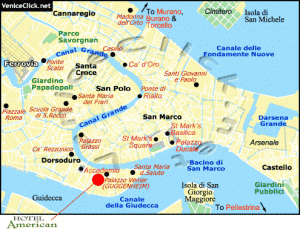 We passed more photo opportunities.
We passed more photo opportunities.
From there, we took the vaporetto down the Grand Canal to the station. Back on the train to Castelfranco, we felt blessed for the glorious weather and beauty of our surroundings and wondered where to go for our next adventure.


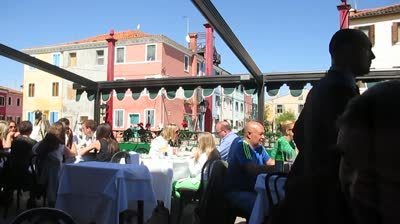
April 27, 2014
Loving the Lido
A 45 minute train journey and we arrive at the station in Venice, excited to be spending time in this timeless city. Outside, the place is heaving with people and boats. We weave our way through the crowds, over a bridge, and down to Piazzale Roma. Officially resident in the Veneto, we’re entitled to travel cards, and we fill in the appropriate forms, show our ID, and buy a carnet of reduced-fare rides from the Hellovenezia office.
Then we trundle our overnight case back to the station, to clamber aboard water-bus number 51. The trip takes 35 minutes via the Giudecca Canal and St Mark’s Basin to the Lido.
It’s here we’ve booked our hotel. Stepping off the vaporetto, we take in the view of Venice with the Dolomites forming a backdrop to the scene.
It’s rare to see the mountains from here, and we feel blessed the weather is so limpid we can do so.
A short taxi ride later (there are cars on this island) and we’re at Pensione Villa Stella. Our hosts are welcoming and the room they give us is lovely.
We relax for half an hour, then set out for an evening stroll. The Lido has a more laid-back, residential feel to it than traditional Venice. We pass the beaches, beautifully empty at this time of the year.
After about 45 minutes’ walk, we stop for a beer at one of the bars along the promenade, where local residents are also enjoying a drink.
We catch sight of the building where the Venice Film Festival is held then pass the boarded up Hotel des Bains, famous for being the location of Thomas Mann’s novella Death in Venice and Visconti’s later film of that name. Footsore and hungry, we make our way to La Tavernetta Wine Bar & Restaurant for dinner. We order baked sea-bass and, when it arrives, it’s absolutely delicious.
Having abstained from a starter, we indulge in chocolate soufflé with vanilla ice-cream for dessert, washed down with crisp white wine. Yum!
Replete, we chat about our next adventure. Tomorrow we’re off to explore the island of Burano, and that will be the subject of my next post.




